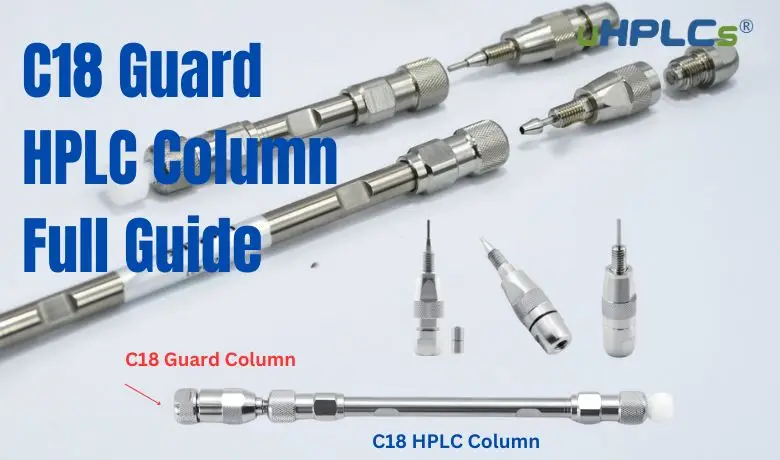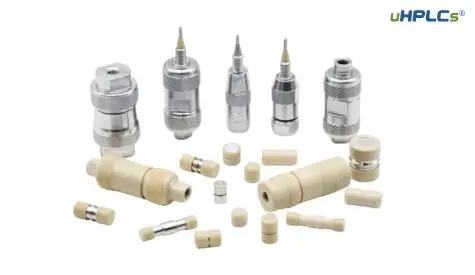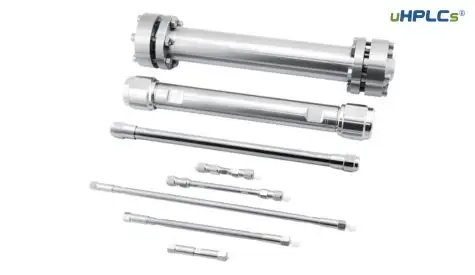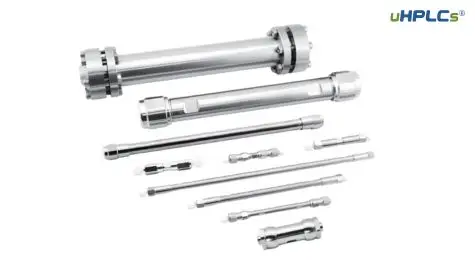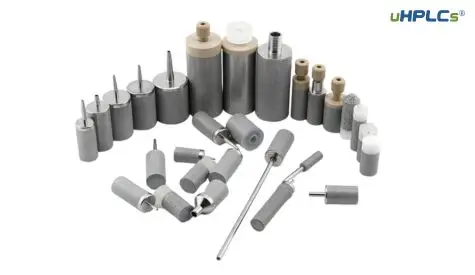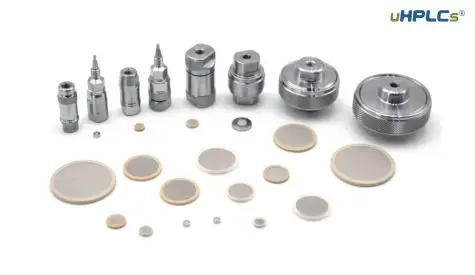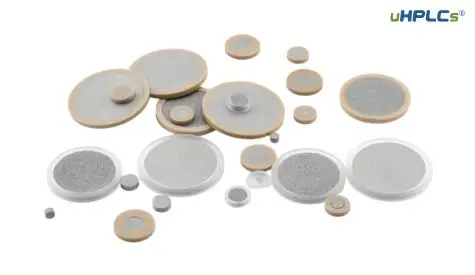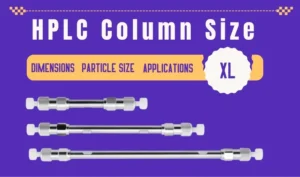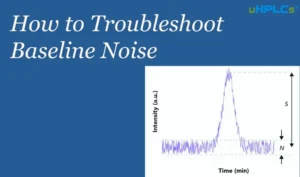Overview of HPLC and C18 Columns
High-Performance Liquid Chromatography (HPLC)
High-performance liquid chromatography (HPLC) is an analytical technique used to separate, identify, and quantify the components in a mixture. It relies on pumps to pass a liquid mobile phase containing the sample through a stationary phase packed in a column. The components in the mixture interact differently with the stationary phase, causing them to elute (exit) the column at different times, allowing for their separation and detection.
C18 Columns in HPLC
C18 columns, also known as octadecylsilyl (ODS) columns, are the most widely used and versatile columns in reversed-phase HPLC. The stationary phase in these columns consists of silica particles coated with long, non-polar octadecyl (C18) hydrocarbon chains.
The key features of C18 columns include:
1. Hydrophobic interactions:
The non-polar C18 chains create a hydrophobic environment that interacts with and retains non-polar and moderately polar analytes through van der Waals forces.
2. Versatility:
C18 columns can separate a wide range of compounds, from pharmaceuticals and natural products to environmental pollutants, making them suitable for various applications.
3. Reproducibility:
C18 columns provide consistent and reliable results, ensuring reproducibility across different laboratories and instruments.
4. Durability:
With proper care, C18 columns can withstand numerous analyses, making them cost-effective.
Guard Columns
Guard columns, also known as pre-columns, are short columns placed before the analytical column to protect it from contamination and extend its lifespan. They contain the same packing material as the analytical column and trap particulates, strongly retained compounds, and other contaminants that could otherwise accumulate on the analytical column and degrade its performance.
In summary, HPLC is a powerful separation technique, and C18 columns are the workhorses of reversed-phase HPLC due to their versatility, reproducibility, and ability to separate a wide range of non-polar and moderately polar compounds. Guard columns play a crucial role in protecting the analytical column and ensuring consistent and reliable results.
Section 1: What is a C18 Guard Column?
What is a C18 Guard Column?
- A C18 guard column is a small HPLC column positioned upstream from the main analytical column.
- It is typically packed with the same C18 stationary phase (octadecyl silica) as the analytical column.
- Compared to the analytical column, a guard column has a shorter length and a wider diameter.
The Guardian Angel of HPLC
- The primary purpose of a C18 guard column is to protect the analytical column from contaminants present in the sample or mobile phase.
- These contaminants can include particulates, strongly retained compounds, or degraded stationary phase fragments.
- By trapping these contaminants, the guard column prevents them from reaching the analytical column and potentially damaging its delicate stationary phase.
Key Features of a C18 Guard Column
- Composition: Packed with C18 stationary phase (octadecyl bonded silica)
- Structure: Short stainless-steel cylinder with frits on both ends
- Dimensions: Typically shorter length and wider diameter compared to the analytical column (e.g., 4.6 mm x 10 mm guard column for a 4.6 mm x 250 mm analytical column)
- Compatibility: Designed to be compatible with various HPLC systems utilizing C18 analytical columns
Section 2: Why Use a C18 Guard Column?
Benefits of Using a C18 Guard Column
- Extends the lifetime of the analytical column
- Reduces maintenance downtime and costs associated with column replacement
- Improves chromatographic performance by maintaining a clean analytical column
- Minimizes baseline drift and peak distortion caused by contaminants
- Enhances data reproducibility and consistency
Common Issues Addressed by C18 Guard Columns (continued)
- Protection Against Particulates and Chemical Fouling
- Particulates can cause frit blockage, leading to increased pressure and distorted peaks.
- Strongly retained compounds can irreversibly bind to the analytical column, reducing its efficiency and affecting peak shapes.
Section 3: Selection Criteria for C18 Guard Columns
Compatibility with Analytical Column
- Matching Stationary Phase Chemistry: The guard column’s stationary phase should be identical to the analytical column’s stationary phase (C18 in this case).
- Particle Size: Ideally, the guard column should have the same particle size as the analytical column for optimal performance.
- Pore Size: Matching pore size between the guard and analytical column is generally recommended, especially for critical separations.
Dimensions and Specifications
- Length: Guard columns are typically shorter than analytical columns, often ranging from 3 to 10 cm.
- Diameter: The guard column’s diameter can be the same or slightly larger than the analytical column.
- Pressure Rating: Choose a guard column with a pressure rating exceeding the maximum pressure your HPLC system typically operates at.
Quality and Brand Considerations
- Importance of High-Quality Brands: Opt for guard columns from reputable brands known for high-quality manufacturing processes and consistent performance.
- Comparison of Popular Brands: Several reputable brands offer high-quality C18 guard columns. Research and compare offerings from brands like:
- Agilent
- Waters
- Phenomenex
- Supelco
- Shimadzu
Section 4: Installation and Usage
Installation Steps
- Gather the necessary tools and materials:
- C18 guard column
- Wrenches for column fittings
- HPLC solvent (appropriate for your mobile phase)
- Turn off the HPLC system and ensure proper pressure release.
- Locate the guard column holder on your HPLC system.
- Unscrew the guard column holder cap and remove any existing guard column (if applicable).
- Remove the caps from both ends of the new C18 guard column.
- Identify the inlet and outlet of the guard column. The flow direction is usually indicated by an arrow on the column.
- Install the guard column into the holder, aligning the inlet with the tubing coming from the injector and the outlet with the tubing leading to the analytical column.
- Hand-tighten the fittings that connect the guard column to the tubing.
Section 5: Troubleshooting and Maintenance
Common Issues and Solutions
1. Increased Backpressure
- Problem: Elevated pressure during operation.
- Solution: Check for blockages, clean or replace the guard column if necessary.
2. Loss of Resolution
- Problem: Poor separation of analytes.
- Solution: Inspect the guard column for contamination, replace if needed, ensure proper mobile phase preparation.
3. Baseline Noise or Drift
- Problem: Unstable baseline in chromatograms.
- Solution: Verify the cleanliness of the guard column, check for air bubbles, and ensure consistent flow rate.
4. Reduced Column Lifetime
- Problem: Shorter than expected lifespan of the analytical column.
- Solution: Regularly maintain the guard column, replace it more frequently to protect the main column.
Step-by-Step Troubleshooting Guide
Identify the Issue
- Monitor the system for any deviations in pressure, resolution, or baseline stability.
Inspect the Guard Column
- Remove and visually inspect the guard column for any visible blockages or contamination.
Clean the Guard Column
- Use a recommended cleaning solution to flush the guard column, removing any residues or contaminants.
Test the System
- Reinstall the cleaned or new guard column and run a standard sample to check for improvements.
Document and Review
- Keep a log of maintenance and issues for future reference and to identify patterns over time.
Maintenance Tips
Regular Maintenance Schedule
- Weekly: Check for any signs of blockages or contamination.
- Monthly: Perform a thorough cleaning of the guard column.
- Quarterly: Replace the guard column to ensure optimal performance.
Cleaning and Replacement Guidelines
- Cleaning: Flush with a suitable solvent (e.g., methanol, acetonitrile) to remove contaminants.
- Replacement: Replace the guard column if cleaning does not resolve issues or after a set number of injections, as recommended by the manufacturer.
Section 6: FAQs
1.What are the benefits of using a C18 guard column?
The benefits of incorporating a C18 guard column into your HPLC workflow are numerous:
- Extends the lifetime of the analytical column: By trapping contaminants, guard columns significantly reduce wear and tear on the analytical column, leading to a longer lifespan and substantial cost savings in the long run.
- Reduces maintenance downtime and costs: Guard columns act as a sacrificial barrier, preventing contaminants from reaching the analytical column and potentially causing blockages or requiring frequent cleaning. This translates to less downtime spent replacing or cleaning the analytical column.
- Enhances analytical performance: A clean analytical column, protected by a guard column, leads to improved chromatographic performance. You’ll experience sharper peaks, minimized baseline drift, and overall enhanced data quality.
- Minimizes baseline drift and peak distortion: Contaminants can cause baseline drift and distort peak shapes, affecting the accuracy and interpretation of your results. Guard columns help prevent this by intercepting these contaminants before they reach the analytical column.
- Improves data reproducibility and consistency: Consistent and reproducible results are paramount in HPLC analysis. By ensuring the integrity of the analytical column, guard columns play a crucial role in achieving this by minimizing variations caused by contamination.
2. When should I replace my C18 guard column?
There’s no single definitive answer to this question as the replacement frequency depends on various factors like:
- Sample characteristics: If your samples are heavily contaminated, you might need to replace the guard column more frequently.
- Frequency of use: The more frequently you use your HPLC system, the sooner the guard column will reach its capacity for trapping contaminants.
- Observed performance: If you start noticing a decrease in chromatographic performance, such as peak broadening or increased backpressure, it might be time to replace the guard column.
A general rule of thumb suggests replacing the guard column after every 30 to 40 injections. However, it’s always recommended to consult your guard column manufacturer’s recommendations and monitor your system’s performance for optimal results.
3. Can I regenerate a C18 guard column?
In some cases, you might be able to regenerate a C18 guard column, especially if the performance decline is mild. However, the effectiveness of regeneration depends on the nature of the contaminants and the severity of the issue. Here’s a brief overview of regeneration methods:
- Solvent flush: Flushing the guard column with a strong solvent like methanol or acetonitrile can sometimes remove weakly bound contaminants. However, this method might not be effective for strongly retained compounds.
- Backflush: Reversing the flow direction through the guard column can help dislodge some trapped contaminants. This technique is most successful for particulates or weakly bound species.
It’s important to note that regeneration attempts can also be counterproductive. If not done carefully, they can further degrade the stationary phase or lead to irreversible contamination. It’s crucial to weigh the potential benefits of regeneration against the cost and ease of simply replacing the guard column. For optimal performance and consistent results, following the manufacturer’s recommendations for replacement frequency is often the best course of action.
4. How do I choose the right C18 guard column for my HPLC application?
Selecting the appropriate C18 guard column is essential for maximizing its benefits. Here are some key factors to consider:
- Compatibility with the analytical column: This is the most critical factor. Ensure the guard column’s stationary phase chemistry matches that of your analytical column (C18 in this case). Ideally, the particle size and pore size should also be identical for optimal performance.
- Dimensions and specifications: Guard columns are typically shorter (3-10 cm) than analytical columns. The diameter can be the same or slightly larger. Choose a guard column with a pressure rating exceeding your system’s typical operating pressure.
- Quality and brand considerations: Opt for guard columns from reputable brands known for high-quality manufacturing and consistent performance. Research and compare offerings from leading brands like Agilent, Waters, Phenomenex, Supelco, and Shimadzu.
By prioritizing these factors, you can ensure the chosen C18 guard column effectively protects your analytical column and streamlines your HPLC workflow.
5. Are there any safety considerations when using C18 guard columns?
HPLC systems operate at high pressures and with potentially hazardous solvents. Here are some safety precautions to remember:
- Always follow the manufacturer’s instructions for both the HPLC system and the guard column.
- Wear appropriate personal protective equipment (PPE) such as safety glasses, gloves, and lab coat when working with HPLC systems and solvents.
- Be mindful of proper solvent disposal according to your laboratory’s safety protocols.
By following these safety guidelines, you can minimize risks associated with using HPLC systems and C18 guard columns.
Contact Us
For any questions or further assistance with C18 Guard HPLC Columns, feel free to contact us. Our experts at uHPLCs are here to help you optimize your HPLC performance. Reach out to us at sales@uhplcs.com for personalized support and advice. Don’t hesitate to get in touch – we’re here to ensure your success!

